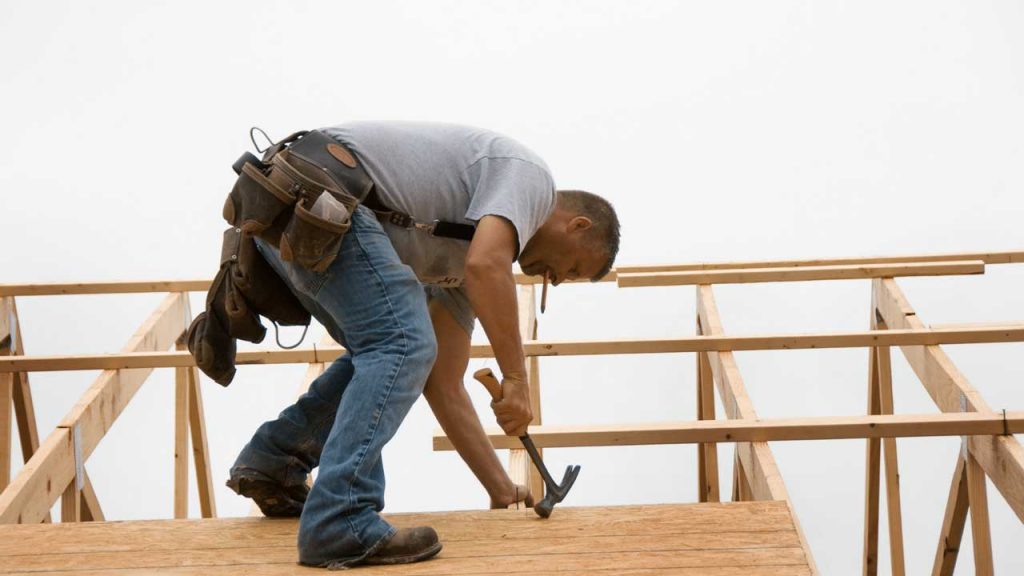Roofing is an essential part of home maintenance and repair. Unfortunately, it can be dangerous if proper safety measures are not taken.
In this article, readers will learn how to protect themselves and their homes while completing roofing work. Various tips on safety equipment, techniques, and other important considerations will also be discussed in order to ensure the best possible results from any roofing job.
With these helpful suggestions, readers should feel confident that they can successfully complete roofing projects with minimal risk or injury.
Preparing For The Roofing Job
Prior to beginning any roofing job, it is important to pre-assess the condition of your roof and ensure that it is in good repair. This will help you identify potential problem areas before work begins, allowing for a more efficient and safe working environment.
It should also be noted that doing overall weatherproofing on the roof can be beneficial prior to undertake the project. Weatherproofing includes sealing off gaps or cracks with caulk or tar strips, as well as ensuring all shingle edges are properly sealed down. Doing this helps protect both your home and those performing the work from inclement weather conditions such as high winds or heavy rain.
In addition, taking preventative measures against dangerous mold growth due to moisture buildup can go a long way toward keeping everyone involved healthy during and after the completion of the project.

Using Appropriate Safety Equipment
The use of appropriate safety equipment is essential for protecting yourself and your home when working on the roof.
Goggles, gloves, hard hats and other protective gear should always be worn to prevent injury or harm from debris or tools.
It is also important to secure all tools that are used while on the roof in order to avoid a potential accident.
Additionally, wearing masks can help reduce exposure to dust which may cause breathing problems.
When it comes to ladders, ensure they are secured and placed on level ground before beginning any work.
The ladder should also extend at least three feet above the edge of the roof for easy access.
In addition, inspect all tools prior to use such as hammers and nails by ensuring there are no broken parts or sharp edges that could lead to an accident.
Knowing Your Limits
The importance of knowing one’s limits cannot be overstated when engaging in roofing activities. Working within your personal capacity is essential to ensure safety and efficiency while on the job.
It can be an arduous task, requiring a great degree of physical effort, strength, and endurance due to its laborious nature. As such, it is wise for individuals to seek help from professionals or trusted colleagues who are experienced with this type of work should they feel overwhelmed by the demands of the project.
Taking regular breaks throughout the day also helps maintain focus and energy levels, allowing workers to better gauge their progress and comfort level as they move forward with their tasks. Acknowledging that even small mistakes can have significant repercussions further reinforces the need for caution and self-awareness at all times during any roofing endeavor.
Therefore, assessing one’s limitations ahead of time can make all the difference between a successful outcome and unnecessary harm or damage.
Inspecting Materials For Damage
Having a thorough understanding of your personal limits is essential to completing any job safely.
The next step in protecting both yourself and your home involves carefully evaluating the quality of materials used for roofing projects and identifying potential hazards associated with them.
It is important to inspect each material before starting work, as even high-quality products can be damaged during transport or storage.
Carefully examine the surface of shingles, tiles, seals, nails, and other components for signs of cracking, chipping, warping, rust spots, or weather damage such as discoloration or mold growth.
You may also want to look for inconsistencies in shape or size between different pieces of material that could indicate inferior manufacturing processes or quality control issues.
Working At Height
When working at height, safety should always be a priority.
It is necessary to inspect equipment regularly and adhere to safety protocols when utilizing ladders or scaffolding.
Working safely while being aware of the associated risks will help ensure that both yourself and your home are protected from potential accidents.
It is important to use the appropriate equipment for each job, and take precautions to minimize any risk associated with working in elevated locations.
Consider anchoring ladders securely and wearing protective gear when needed; this can include helmets, gloves, and other items depending on the task.

Following Proper Procedures
The safety of roofing projects should never be overlooked. Taking the proper precautions to protect yourself and your home is crucial when undertaking a roofing project. Following proper procedures will ensure that the project progresses safely, efficiently, and effectively.
When it comes to following safe practices while working on roofs, two important considerations are securing tools and identifying hazards.
Securely storing any tools used during the roofing process is essential for preventing accidents or damage to property. Ladders, scaffolding equipment, or other hazardous objects need to be properly secured before beginning work in order to avoid them falling off of rooftops and causing injury or further damage.
Similarly, potential risks can be minimized by thoroughly inspecting the area around the work site for any potential dangers such as power lines, overhanging trees and branches, slippery surfaces, etc., prior to starting the job and regularly assessing these throughout its duration.
Cleaning Up After The Job
One of the most important parts of a roofing project is cleaning up after the job. It is essential to secure any debris that may present an injury hazard, as well as ensure that it is disposed of in a responsible manner.
This includes disposing nails and other sharp items properly and away from public areas or places where they could be stepped on. Additionally, all hazardous materials such as tar should also be cleared away responsibly with proper disposal methods outlined by local regulations.
Safety precautions must also be taken when using ladders during clean-up operations. Taking the necessary safety measures before beginning will help protect you from potential falls or slips while securing debris.
